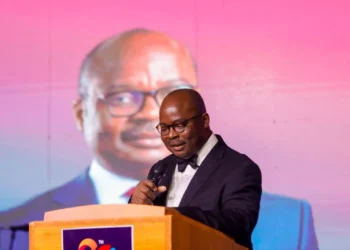After a brief respite, inflation in Ghana has once again surged, reaching 23.5% in January 2024, as reported by the Ghana Statistical Service.
This increase marks a return to the upward trajectory following five consecutive months of decline, with December 2023 witnessing a slightly lower rate of 23.2%.
The data from the GSS reveals that the rise in year-on-year inflation was primarily driven by a significant uptick in non-food items such as housing, clothing, and transport. Non-food inflation soared to 20.5% in January 2024 from 18.7% in the previous month.
However, there was a contrasting trend in food inflation, which continued its decline, albeit marginally, dropping to 27.1% from 28.7% in December 2023.
Examining the month-on-month inflation rates, food inflation stood at 1.6%, while non-food inflation was estimated at 2.4%. This indicates a slightly sharper increase in non-food prices compared to food items during the period.
Seven divisions were identified to have inflation rates higher than the national average. These include Alcoholic Beverages, Tobacco, and Narcotics (38.5%); Personal Care, Social Protection, and Miscellaneous Goods and Services (32.0%).
The others include: Restaurants and Accommodation Services (29.2%); Furnishings, Household Equipment, and Routine Household Maintenance (27.7%); Food and Non-Alcoholic Beverages (27.1%); Health (26.6%); and Recreation, Sports, and Culture (24.9%). This disparity in inflation rates across sectors underscores the heterogeneous nature of price dynamics within the economy.
A Closer Look At The Sub-Classes
Moreover, a closer look at the sub-classes reveals that ten out of fifteen registered inflation rates are higher than the overall food inflation rate of 28.7%. Notably, Cocoa Drinks (73.5%), Tea and related products (71.2%), Vegetables, Tubers, Plantain, Cooking Oil, Banana, and Pulses (35.8%), and Coffee and coffee substitutes (33.2%) were among those with inflation rates significantly above the average. These figures highlight the pronounced inflationary pressures within specific segments of the food market.
Regional disparities in inflation rates were also evident, with the Eastern Region recording the highest inflation rate of 37.1%, driven primarily by food prices. In contrast, the Greater Accra Region registered the lowest inflation rate at 18%.
This discrepancy underscores the regional variations in economic conditions and price dynamics, influenced by factors such as production patterns, distribution networks, and local demand-supply dynamics.
The resurgence of inflation raises concerns about its potential impact on the economy and the welfare of households. Persistent inflation erodes purchasing power, reduces real incomes, and can hinder economic growth by discouraging investment and consumption. Additionally, high inflation poses challenges for policymakers in maintaining price stability and fostering macroeconomic stability.
In response to the elevated inflationary pressures, policymakers may consider implementing measures to address the underlying drivers of inflation. This could involve a combination of monetary, fiscal, and structural policies aimed at curbing price pressures, enhancing productivity, and improving supply chain efficiency.
Furthermore, efforts to strengthen the resilience of the economy to external shocks and domestic vulnerabilities are crucial for mitigating the adverse effects of inflation. This includes enhancing agricultural productivity, promoting investment in infrastructure, and fostering a conducive business environment to support sustainable economic growth and development.
All in all, the recent uptick in inflation to 23.5% in January 2024 underscores the challenges facing Ghana’s economy. Addressing inflationary pressures requires coordinated efforts and targeted policies to ensure price stability, safeguard macroeconomic fundamentals, and promote inclusive growth and prosperity for all segments of society.
READ ALSO: Consolidated Bank Ghana LTD Receives Commendation and Support from SIGA





















